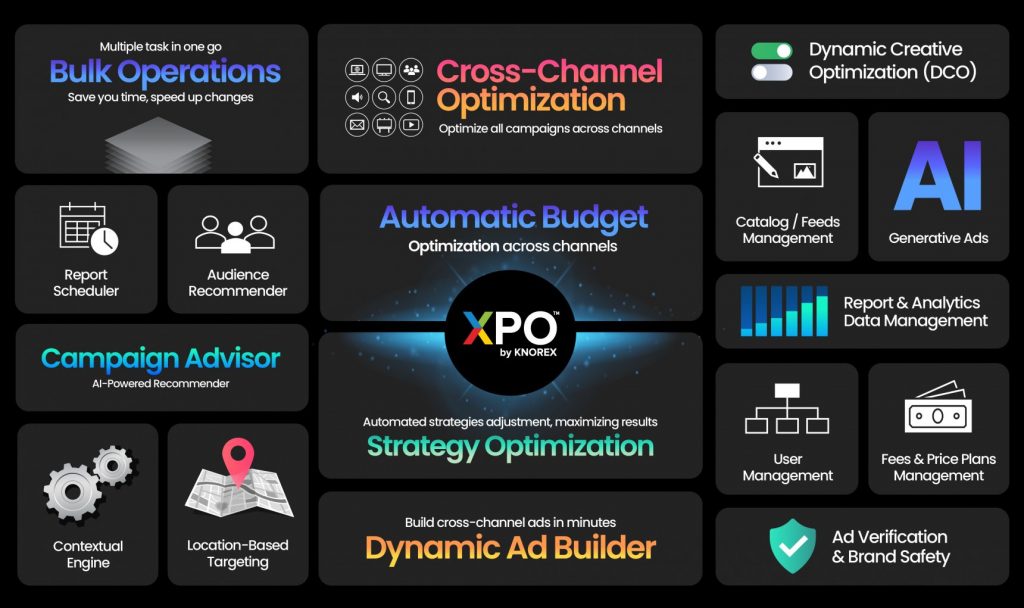In traditional media advertising, advertisers deal with minimal execution details. However, digital advertising is vastly different. The following table illustrates the key differences between the two.
Traditional Advertising | Digital Advertising |
E.g., radio, TV, billboards, prints such as newspapers, magazines. | E.g., search, social media, the Internet, OTT/CTV, digital billboards. |
No data is available. Limited or no audience targeting control or capability. | Data-driven to power sophisticated audience targeting. |
The marketing message is broadcast with no ability to target a specific audience or segment. | The marketing message can be delivered wide to the mass or highly targeted to one or more specific audience/segment(s) with personalized messages. |
Large and wide scale reach, typically on a national or local level, though no ability to control or change on-the-fly. | Flexibility to advertise: global, local, or granular location(s). |
Little execution or operational details to tackle. | Considerable operational details for effective and efficient execution, even after ad launch (e.g., ad formats, sizes, trackers, etc.). Increases substantially as the number of ad channels also increases. See the section on “Escalating Complexity When Executing in Digital Advertising.” |
No or limited measurements, reporting data or analytics. | Sophisticated tracking with a wealth of data available for reporting and analysis. |
In the fast-paced world of modern digital advertising, advertisers face many challenges that demand nimble strategies and innovative approaches. One of the primary challenges that advertisers face is the escalating competition for consumers’ attention.
With the proliferation of online platforms, the rise of ad-blocking tools, and the degradation of third-party cookies for tracking purpose, capturing, and retaining audience interest has become increasingly strenuous. Advertisers must explore new, engaging formats, methods, or channels to improve results.
The evolving landscape of consumer behavior presents another formidable hurdle. The shift towards mobile and the fragmentation of audiences across various devices and advertising channels complicate targeting and measurement efforts. Advertisers are struggling to attain a unified view of their audience’s digital footprints.
To achieve adequate reach in the digital world, advertisers must advertise on multiple channels, thus adding considerable complexities when it comes to execution. Here are the six most common complexities advertisers face when embarking on multi-channel advertising.
- Complexity: Advertisers must learn how to operate multiple digital proprietary systems; each system is very complex and require highly skilled and trained staff to operate.
- Manual Production: Many digital advertising processes are highly manual and tedious and involve repetitive efforts to set up ads across different channels.
- Data Fragmentation: As execution is carried out in silo across the different channels, data becomes scattered, hampering reuse across different systems in real-time.
- Execution and Optimization: Advertisers are unable to plan, execute, and optimize ads across multiple systems in real-time.
- Reporting: Consolidating reports from the different systems across these channels is a time-consuming and error-prone process.
- Billing: Siloed execution, data fragmentation, all lead to painful and arduous task when it comes to reconciliation of accounts for billing and invoicing.
Introduction to Advertising Management and Execution (AMX)
AMX is a category of online advertising management software that integrates various applications for advertisers. Powered by AI and machine learning, it enables intelligent automation and scaling of core online advertising processes.
An AMX system offers integration, automation, scaling, and intelligence for efficient digital advertising operations. It consolidates critical processes and resources, providing real-time visibility for timely decision-making. An AMX system enables advertisers to manage ad creation, data feeds, campaigns, performance optimization, ad trackers, reporting, analytics, data consolidation, accounts reconciliation, and billing management, all in one place.
Data from various modules are shared for instant monitoring and optimization, reducing risks, and enhancing performance. Rapid and consistent execution across systems saves time and minimizes errors. AI/ML-driven automation streamlines repetitive and manual tasks in digital advertising.
An AMX system provides the following:
- Ads creation
- Execution
- Reporting & Analytics
- Data Management
- Billing & Management
- Planning and Optimization

Why Use an AMX System?
Digital advertising is increasingly complex. Currently, many advertisers run two or three different ad platforms, usually one for Google advertising and another for Meta advertising. OpenRTB-based advertising, which involves purchasing ad impressions from the Open Internet that covers digital channels like Connected TV (CTV), OTT (for streaming), display, native, video, audio, and digital-out-of-home (DOOH), is more likely to be used by advertisers with larger advertising budgets. A Demand-side Platform (DSP) is the name of the kind of software that is used for OpenRTB-based advertising.
Operating any one of these advertising systems is already challenging, let alone two or more of them. It requires deep digital domain expertise, specific technical and operational knowledge, and skills that can only be developed over time through actual operating of the systems. In the case when operating a DSP, advertisers will have to manage additional third-party systems like creative management platforms (CMPs), data management platforms, customer data platforms (CDPs), analytics, and so forth to extend a DSP’s core functionalities, which include launching and managing advertising campaigns as well as reporting on those campaigns.
Data is separated when many third-party applications or systems are involved, necessitating costly, time-consuming, and error-prone data integration. Real-time optimization becomes impossible due to the fragmented and siloed data.
Operating numerous systems also requires laboriously re-doing the same manual and tiresome tasks from one system to another, which adds to the delay and introduces errors. All of which result in increased expenses and complexity.
AMX system consolidates all mission-critical and core digital advertising processes into one centralized hub. This integration combines various advertising workflow components, streamlining the once highly arduous, manual, and complex processes.
An AMX system offers many benefits, including automation, simplification of execution, and unified data access for better decision-making. These are key benefits:
- Higher productivity: Automate and streamline processes, achieving more with fewer resources for scalable business growth.
- Simplified & unified execution: Unify advertising across channels, reducing the learning curve, repetitive tasks, and human errors.
- Expedited reporting: Eliminate data silos, consolidate reporting for faster insights, and improved performance.
- Lower costs: An integrated platform reduces complexities, overhead, and manual processes, leading to cost savings.
- Greater transparency and efficacy: Shared and consolidated data provide a unified view for better decision-making and optimization.
- Improved agility: Provides unified access to real-time data and enables quicker identification and response to problems and opportunities.
With AMX, advertisers have a single platform to handle everything from ad creation and campaign management to data feeds, performance
optimization, and reporting, which otherwise, advertisers would have to juggle multiple systems, and each system serves different aspects of their advertising needs, leading to fragmentation, inefficiencies, and increased complexity. By centralizing these critical functions within AMX, advertisers can achieve greater efficiency, improved agility, and enhanced collaboration among team members. Once time-consuming, error-prone, and manual tasks are now automated, freeing up valuable resources and allowing advertisers to focus on strategy and creativity.
Moreover, data consolidation within AMX offers a unified view of advertising efforts – a single source of truth, enabling real-time insights and data-driven decision-making. Advertisers can now access comprehensive reporting and analytics, ensuring they have the necessary information to optimize campaigns, target the right audience, and measure performance accurately.
In addition to simplifying day-to-day operations, AMX also promotes scalability. As advertising efforts grow, AMX provides the foundation to expand seamlessly, reducing the need for additional complex systems and mitigating the risks associated with fragmented workflows.
Overall, implementing an AMX system empowers advertisers to operate with greater efficiency, improved control, and a comprehensive view of their digital advertising endeavors. By consolidating the diverse facets of advertising management and execution, AMX streamlines the advertising process, paving the way for more successful and impactful campaigns.
Conclusion
The AMX system is a game-changer for advertisers, enabling them to orchestrate crucial advertising processes in one place. With budget constraints and hiring challenges, efficiency is vital. AI/ML breakthroughs fuel automation, allowing for scalable and efficient operations. Advertisers must embrace AI/ML-driven AMX systems to unlock data-driven digital advertising potential across multiple channels.





